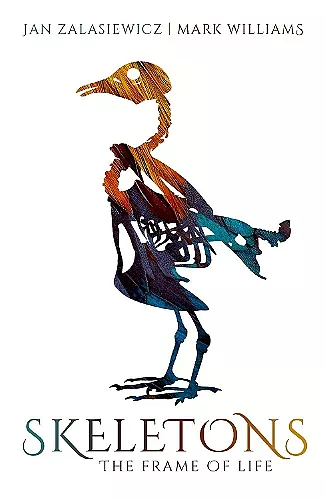Skeletons
The Frame of Life
Mark Williams author Jan Zalasiewicz author
Format:Hardback
Publisher:Oxford University Press
Published:22nd Mar '18
Currently unavailable, and unfortunately no date known when it will be back

Over half a billion years ago life on earth took an incredible step in evolution, when animals learned to build skeletons. Using many different materials, from calcium carbonate and phosphate, and even silica, to make shell and bone, they started creating the support structures that are now critical to most living forms, providing rigidity and strength. Manifesting in a vast variety of forms, they provided the framework for sophisticated networks of life that fashioned the evolution of Earth's oceans, land, and atmosphere. Within a few tens of millions of years, all of the major types of skeleton had appeared. Skeletons enabled an unprecedented array of bodies to evolve, from the tiniest seed shrimp to the gigantic dinosaurs and blue whales. The earliest bacterial colonies constructed large rigid structures - stromatolites - built up by trapping layers of sediment, while the mega-skeleton that is the Great Barrier Reef is big enough to be visible from space. The skeletons of millions of coccolithophores that lived in the shallow seas of the Mesozoic built the white cliffs of Dover. These, and insects, put their scaffolding on the outside, as an exoskeleton, while vertebrates have endoskeletons. Plants use tubes of dead tissue for rigidity and transport of liquids - which in the case of tall trees need to be strong enough to extend 100 m or more from the ground. Others simply stitch together a coating from mineral grains on the seabed. In Skeletons, Jan Zalasiewicz and Mark Williams explore the incredible variety of the skeleton innovations that have enabled life to expand into a wide range of niches and lifestyles on the planet. Discussing the impact of climate change, which puts the formation of some kinds of skeleton at risk, they also consider future skeletons, including the possibility that we might increasingly incorporate metal and plastic elements into our own, as well as the possible materials for skeleton building on other planets.
The authors make the journey enchanting with stories of how fossils are found and why they are so important in the skeletal record. * Sandra Shefelbine, Mechanical & Industrial Engineering and Bioengineering, Northeastern University, The Quarterly Review of Biology *
An engaging story... woven together here by tales of discovery and discoverers. * Robert Montgomerie, Times Higher Education *
Skeletons is a superb, highly enjoyable book ... very informative and engaging. * Melanie Brehaut, Palaeontological Association Newsletter *
In this book, Zalasiewicz and Williams provide an accessible and fun introduction to all kinds of skeletons, from the tiny capsules of microscopic diatoms to the great bones of the dinosaurs, and from lignified vascular plants to coral reefs. A great introduction to the evolution of life and especially to understanding why some organisms are small and some are large. * Michael Benton, University of Bristol *
ISBN: 9780198802105
Dimensions: 238mm x 161mm x 29mm
Weight: 552g
312 pages